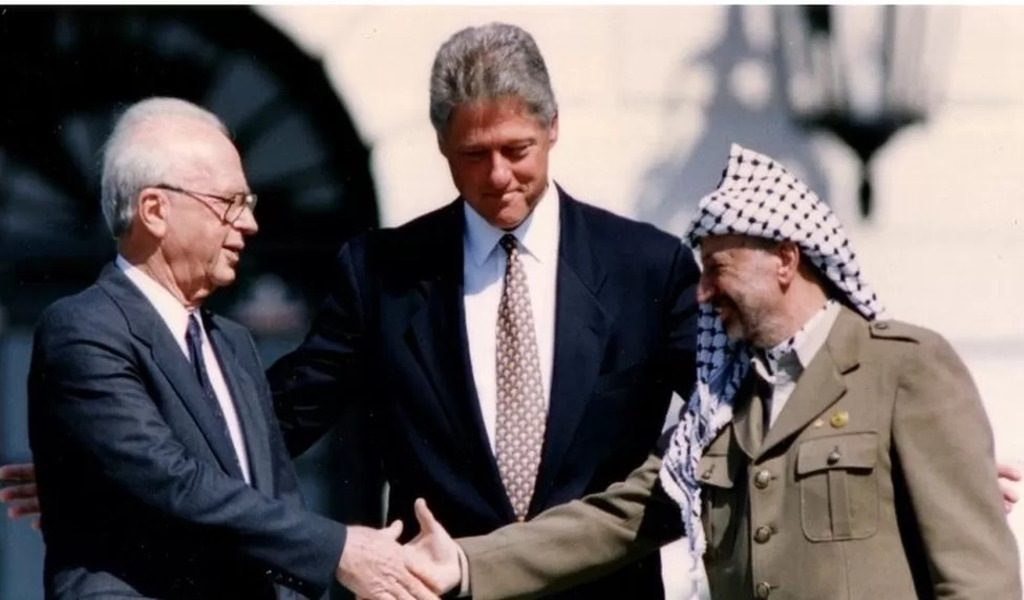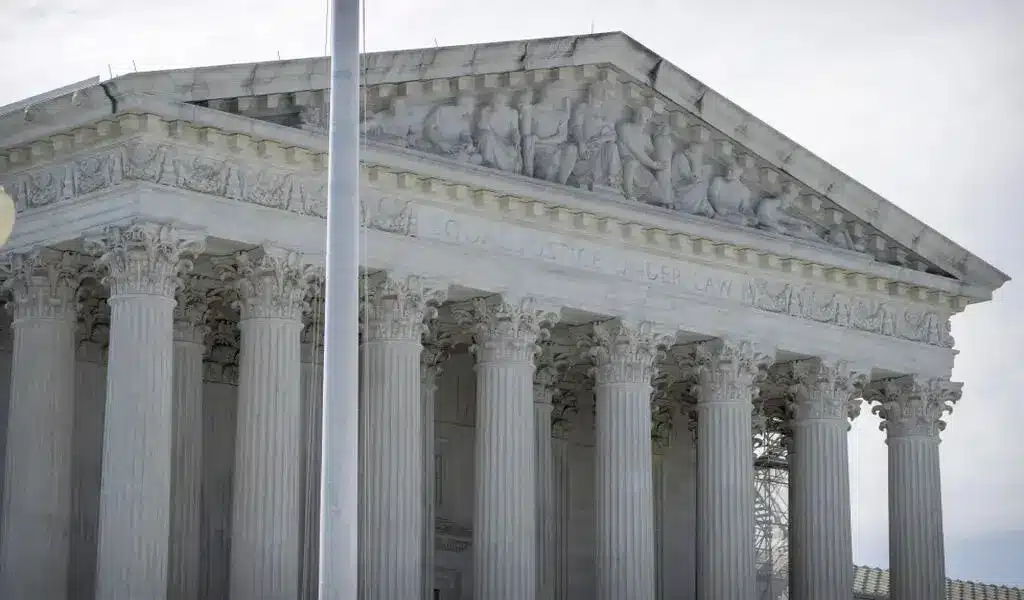News
The Israeli-Gaza Conflict: A Historical Overview

(CTN NEWS) – On October 7, the Palestinian militant group Hamas initiated a highly unusual attack on Israel.
This assault involved hundreds of militants infiltrating communities near the Gaza Strip.
The attack resulted in the death of over 1,400 Israelis, and the Israeli military reported that more than 220 soldiers and civilians, including women and children, were taken hostage in Gaza.
In response, the Israeli military carried out extensive air and artillery strikes in Gaza, resulting in the death of more than 5,000 Palestinians, according to Gaza’s health ministry.
Israel has also amassed its troops along the Gaza boundary, raising concerns of an impending large-scale ground operation.
As part of its response, Israel cut off the supply of electricity and most sources of water to Gaza.
It also halted the importation of food and medicine.
However, it did permit the entry of several aid convoys through Egypt’s Rafah crossing starting on Saturday.
What was Israel before 1948, and what was the Balfour Declaration?
After the fall of the Ottoman Empire following World War One, Britain assumed control over the region known as Palestine.
This area was inhabited by a Jewish minority and an Arab majority, along with smaller ethnic groups.
Tensions escalated when the international community tasked the UK with establishing a “national home” for Jewish people in Palestine.
This responsibility originated from the Balfour Declaration of 1917, a commitment made by then Foreign Secretary Arthur Balfour to Britain’s Jewish community.
The declaration became an integral part of the British mandate over Palestine and was endorsed by the League of Nations, the precursor to the United Nations, in 1922.
While Palestine held significant historical importance for Jews as their ancestral homeland, Palestinian Arabs also laid claim to the land and contested the move.
Between the 1920s and 1940s, the number of Jewish immigrants to Palestine grew, many of whom were escaping persecution in Europe, particularly the horrors of the Nazi Holocaust during World War Two.
Simultaneously, violence between Jews and Arabs, as well as resistance against British rule, intensified.
In 1947, the United Nations voted in favor of partitioning Palestine into separate Jewish and Arab states, designating Jerusalem as an international city.
Although this plan was accepted by Jewish leaders, it was rejected by the Arab side and never put into effect.

How and why was Israel created?
In 1948, as the British mandate over Palestine came to an end and the issue remained unresolved, Jewish leaders declared the establishment of the State of Israel.
This new nation was envisioned as both a safe haven for Jews fleeing persecution and a national homeland for Jews.
The intensifying conflict between Jewish and Arab militias had been brewing for several months, and shortly after Israel’s declaration of statehood, five Arab countries launched an attack.
This marked the beginning of a war that resulted in the mass exodus of hundreds of thousands of Palestinians from their homes, a period they refer to as Al Nakba, meaning the “Catastrophe.”
When the fighting concluded with a ceasefire the following year, Israel had gained control of the majority of the territory.
Jordan occupied the region that would come to be known as the West Bank, while Gaza was under Egyptian control.
The city of Jerusalem was divided, with Israeli forces in the West and Jordanian forces in the East.
As no formal peace agreement was reached, subsequent decades witnessed further wars and conflicts in the region.
The map of Israel
In the 1967 Six-Day War, Israel captured East Jerusalem, the West Bank, most of the Syrian Golan Heights, Gaza, and the Egyptian Sinai peninsula.
As a result, Israel gained control over these territories.
Many Palestinian refugees, as well as their descendants, reside in Gaza and the West Bank, and in neighboring countries such as Jordan, Syria, and Lebanon.
Israel has not permitted them or their descendants to return to their original homes, arguing that such a return would pose a demographic threat and endanger its identity as a Jewish state.
Israel continues to occupy the West Bank and claims the entirety of Jerusalem as its capital.
In contrast, the Palestinians aspire to establish East Jerusalem as the capital of a future Palestinian state.
The United States is one of the few nations to officially recognize Jerusalem as Israel’s capital.
Over the past five decades, Israel has constructed settlements in the West Bank and East Jerusalem, where more than 700,000 Jewish residents now reside.
These settlements are considered illegal under international law, a position upheld by the UN Security Council and governments like the UK, although Israel disputes this view.

What is the Gaza Strip?
Gaza is a narrow piece of land located between Israel and the Mediterranean Sea, with a short border in the south shared with Egypt.
It measures just 41 kilometers (25 miles) in length and is 10 kilometers wide.
Despite its small size, Gaza is home to over two million people, making it one of the most densely populated areas in the world.
After the 1948-49 war, Gaza came under Egyptian occupation for 19 years.
In the 1967 war, Israel occupied Gaza, and this occupation continued until 2005, during which time Israel established Jewish settlements in the region.
However, Israel withdrew its troops and settlers from Gaza in 2005.
Nevertheless, Israel retained control over Gaza’s airspace, shared border, and coastline.
The United Nations continues to classify Gaza as a territory under Israeli occupation.
What are the main problems between Israelis and Palestinians?
The Israeli-Palestinian conflict remains deeply complex, with various unresolved issues, including:
1. Palestinian Refugees:
The question of what should happen to Palestinian refugees who were displaced during the conflict remains a contentious issue.
Palestinians seek the right of return to their former homes, but Israel is opposed to this on the grounds that it could threaten the country’s existence as a Jewish state.
2. Jewish Settlements:
Jewish settlements in the occupied West Bank are a major point of contention.
Palestinians demand that these settlements be removed, considering them illegal under international law.
Israel has continued to build and expand settlements, complicating efforts to establish a two-state solution.
3. Jerusalem:
The status of Jerusalem is another critical issue.
Both Israelis and Palestinians claim Jerusalem as their capital.
Israel currently controls the entire city, while Palestinians aspire to have East Jerusalem as the capital of a future Palestinian state. Finding a solution for Jerusalem’s status is challenging.
4. Two-State Solution:
The fundamental question of whether a Palestinian state should exist alongside Israel remains at the core of the conflict.
The “two-state solution” envisions an independent Palestine living alongside Israel.
However, achieving this solution has proven difficult due to the numerous disputes outlined above.
These are just some of the key issues that have prevented a comprehensive peace agreement between Israelis and Palestinians.
Reaching a mutually acceptable resolution remains a significant challenge.

What efforts have been made to resolve these problems?
Israel-Palestinian peace negotiations took place sporadically from the 1990s to the 2010s, punctuated by episodes of violence.
At the outset, the prospects for a negotiated peace seemed promising.
Secret talks in Norway evolved into the Oslo peace process, famously marked by a ceremony on the White House lawn in 1993, overseen by President Bill Clinton.
In a historic moment, the Palestinians recognized the State of Israel, and Israel acknowledged the Palestine Liberation Organization (PLO), its long-standing adversary, as the sole representative of the Palestinian people.
A self-governing Palestinian Authority was established.
However, tensions soon surfaced, with then-Opposition leader Benjamin Netanyahu deeming Oslo a grave threat to Israel.
Israel expedited its settlement efforts in the occupied Palestinian territories, and the emerging Palestinian militant group, Hamas, dispatched suicide bombers to sabotage any prospects of an agreement.
The atmosphere within Israel soured, culminating in the assassination of Israeli Prime Minister Yitzhak Rabin by a Jewish extremist on November 4, 1995.
Efforts were made in the 2000s to rekindle the peace process, including a roadmap crafted in 2003 by global powers with the ultimate aim of a two-state solution.
Regrettably, it was never implemented.
In 2014, peace initiatives reached a standstill when negotiations between Israelis and Palestinians faltered in Washington.
The latest peace plan, referred to as “the deal of the century” by Prime Minister Netanyahu, was introduced by the United States during Donald Trump’s presidency.
However, it was rebuffed by the Palestinians as one-sided and never gained traction.

Why are Israel and Gaza at war now?
Hamas, an Islamist group committed to the destruction of Israel and classified as a terrorist organization by the UK and other countries, gained power through elections in 2006.
The group took control of Gaza in the following year, ousting the Fatah movement led by West Bank-based President Mahmoud Abbas.
Since then, Gaza has witnessed several conflicts with Israel.
Israel, along with Egypt, has maintained a partial blockade on Gaza, aiming to isolate Hamas and prevent attacks, especially rocket launches toward Israeli cities.
Palestinians in Gaza argue that these restrictions and Israeli airstrikes on densely populated areas amount to collective punishment.
This year has seen the highest number of Palestinian casualties in the occupied West Bank and East Jerusalem, further fueled by restrictions and military actions in response to attacks on Israelis.
Hamas’s recent attack may have been driven by these ongoing tensions, along with a bid to gain popularity among ordinary Palestinians and potentially negotiate the release of Palestinians held in Israeli prisons.
Who supports Israel in the current conflict, and who does not?
Numerous countries have expressed their disapproval of the Hamas attack on Israel, with the United States, the European Union, and several Western nations leading the condemnation.
They have all taken a strong stance against this act of violence.
In contrast, Russia and China have not publicly criticized Hamas for the attack.
They claim to be maintaining communication and engagement with both sides involved in the conflict.
Russian President Vladimir Putin, in particular, has blamed the United States’ policies for the continued lack of peace in the Middle East.
Iran, which is a staunch adversary of Israel, provides support to Hamas as well as Hezbollah.
Hezbollah militants have been engaged in almost daily skirmishes with Israeli forces since Hamas initiated its attack.
This has raised questions about Iran’s potential involvement in planning and executing the attack by Hamas, despite Tehran’s firm denial of any such role.
Overall, the international response to the Hamas attack on Israel is divided, with some countries condemning it and others refraining from doing so or showing support for Hamas.
The complex geopolitics of the region further complicate the situation.
MORE RELATED NEWS:
Dinosaur Footprints Discovered on the Beach of the Isle of Wight, England
On Nov 2, IMF team to visit Pakistan for first review talks
US rejects Israel-Gaza ceasefire as Hamas released 2 female hostages

News
Google’s Search Dominance Is Unwinding, But Still Accounting 48% Search Revenue

Google is so closely associated with its key product that its name is a verb that signifies “search.” However, Google’s dominance in that sector is dwindling.
According to eMarketer, Google will lose control of the US search industry for the first time in decades next year.
Google will remain the dominant search player, accounting for 48% of American search advertising revenue. And, remarkably, Google is still increasing its sales in the field, despite being the dominating player in search since the early days of the George W. Bush administration. However, Amazon is growing at a quicker rate.
Google’s Search Dominance Is Unwinding
Amazon will hold over a quarter of US search ad dollars next year, rising to 27% by 2026, while Google will fall even more, according to eMarketer.
The Wall Street Journal was first to report on the forecast.
Lest you think you’ll have to switch to Bing or Yahoo, this isn’t the end of Google or anything really near.
Google is the fourth-most valued public firm in the world. Its market worth is $2.1 trillion, trailing just Apple, Microsoft, and the AI chip darling Nvidia. It also maintains its dominance in other industries, such as display advertisements, where it dominates alongside Facebook’s parent firm Meta, and video ads on YouTube.
To put those “other” firms in context, each is worth more than Delta Air Lines’ total market value. So, yeah, Google is not going anywhere.
Nonetheless, Google faces numerous dangers to its operations, particularly from antitrust regulators.
On Monday, a federal judge in San Francisco ruled that Google must open up its Google Play Store to competitors, dealing a significant blow to the firm in its long-running battle with Fortnite creator Epic Games. Google announced that it would appeal the verdict.
In August, a federal judge ruled that Google has an illegal monopoly on search. That verdict could lead to the dissolution of the company’s search operation. Another antitrust lawsuit filed last month accuses Google of abusing its dominance in the online advertising business.
Meanwhile, European regulators have compelled Google to follow tough new standards, which have resulted in multiple $1 billion-plus fines.

Pixa Bay
Google’s Search Dominance Is Unwinding
On top of that, the marketplace is becoming more difficult on its own.
TikTok, the fastest-growing social network, is expanding into the search market. And Amazon has accomplished something few other digital titans have done to date: it has established a habit.
When you want to buy anything, you usually go to Amazon, not Google. Amazon then buys adverts to push companies’ products to the top of your search results, increasing sales and earning Amazon a greater portion of the revenue. According to eMarketer, it is expected to generate $27.8 billion in search revenue in the United States next year, trailing only Google’s $62.9 billion total.
And then there’s AI, the technology that (supposedly) will change everything.
Why search in stilted language for “kendall jenner why bad bunny breakup” or “police moving violation driver rights no stop sign” when you can just ask OpenAI’s ChatGPT, “What’s going on with Kendall Jenner and Bad Bunny?” in “I need help fighting a moving violation involving a stop sign that wasn’t visible.” Google is working on exactly this technology with its Gemini product, but its success is far from guaranteed, especially with Apple collaborating with OpenAI and other businesses rapidly joining the market.
A Google spokeswoman referred to a blog post from last week in which the company unveiled ads in its AI overviews (the AI-generated text that appears at the top of search results). It’s Google’s way of expressing its ability to profit on a changing marketplace while retaining its business, even as its consumers steadily transition to ask-and-answer AI and away from search.

Google has long used a single catchphrase to defend itself against opponents who claim it is a monopoly abusing its power: competition is only a click away. Until recently, that seemed comically obtuse. Really? We are going to switch to Bing? Or Duck Duck Go? Give me a break.
But today, it feels more like reality.
Google is in no danger of disappearing. However, every highly dominating company faces some type of reckoning over time. GE, a Dow mainstay for more than a century, was broken up last year and is now a shell of its previous dominance. Sears declared bankruptcy in 2022 and is virtually out of business. US Steel, long the foundation of American manufacturing, is attempting to sell itself to a Japanese corporation.
SOURCE | CNN
News
2024 | Supreme Court Won’t Hear Appeal From Elon Musk’s X Platform Over Warrant In Trump Case

Washington — Trump Media, The Supreme Court announced Monday that it will not hear an appeal from social media platform X about a search warrant acquired by prosecutors in the election meddling case against former President Donald Trump.
The justices did not explain their rationale, and there were no recorded dissents.
The firm, which was known as Twitter before being purchased by billionaire Elon Musk, claims a nondisclosure order that prevented it from informing Trump about the warrant obtained by special counsel Jack Smith’s team violated its First Amendment rights.
The business also claims Trump should have had an opportunity to exercise executive privilege. If not reined in, the government may employ similar tactics to intercept additional privileged communications, their lawyers contended.
Supreme Court Won’t Hear Appeal From Elon Musk’s X Platform Over Warrant In Trump Case
Two neutral electronic privacy groups also joined in, urging the high court to hear the case on First Amendment grounds.
Prosecutors, however, claim that the corporation never shown that Trump utilized the account for official purposes, therefore executive privilege is not a problem. A lower court also determined that informing Trump could have compromised the current probe.

Trump utilized his Twitter account in the weeks preceding up to his supporters’ attack on the Capitol on January 6, 2021, to spread false assertions about the election, which prosecutors claim were intended to create doubt in the democratic process.
The indictment describes how Trump used his Twitter account to encourage his followers to travel to Washington on Jan. 6, pressuring Vice President Mike Pence to reject the certification, and falsely claiming that the Capitol crowd, which battered police officers and destroyed glass, was peaceful.
Supreme Court Won’t Hear Appeal From Elon Musk’s X Platform Over Warrant In Trump Case
That case is now moving forward following the Supreme Court’s verdict in July, which granted Trump full immunity from criminal prosecution as a former president.
The warrant arrived at Twitter amid quick changes implemented by Musk, who bought the company in 2022 and has since cut off most of its workforce, including those dedicated to combating disinformation and hate speech.
SOURCE | AP
News
The Supreme Court Turns Down Biden’s Government Appeal in a Texas Emergency Abortion Matter.

(VOR News) – A ruling that prohibits emergency abortions that contravene the Supreme Court law in the state of Texas, which has one of the most stringent abortion restrictions in the country, has been upheld by the Supreme Court of the United States. The United States Supreme Court upheld this decision.
The justices did not provide any specifics regarding the underlying reasons for their decision to uphold an order from a lower court that declared hospitals cannot be legally obligated to administer abortions if doing so would violate the law in the state of Texas.
Institutions are not required to perform abortions, as stipulated in the decree. The common populace did not investigate any opposing viewpoints. The decision was made just weeks before a presidential election that brought abortion to the forefront of the political agenda.
This decision follows the 2022 Supreme Court ruling that ended abortion nationwide.
In response to a request from the administration of Vice President Joe Biden to overturn the lower court’s decision, the justices expressed their disapproval.
The government contends that hospitals are obligated to perform abortions in compliance with federal legislation when the health or life of an expectant patient is in an exceedingly precarious condition.
This is the case in regions where the procedure is prohibited. The difficulty hospitals in Texas and other states are experiencing in determining whether or not routine care could be in violation of stringent state laws that prohibit abortion has resulted in an increase in the number of complaints concerning pregnant women who are experiencing medical distress being turned away from emergency rooms.
The administration cited the Supreme Court’s ruling in a case that bore a striking resemblance to the one that was presented to it in Idaho at the beginning of the year. The justices took a limited decision in that case to allow the continuation of emergency abortions without interruption while a lawsuit was still being heard.
In contrast, Texas has been a vocal proponent of the injunction’s continued enforcement. Texas has argued that its circumstances are distinct from those of Idaho, as the state does have an exemption for situations that pose a significant hazard to the health of an expectant patient.
According to the state, the discrepancy is the result of this exemption. The state of Idaho had a provision that safeguarded a woman’s life when the issue was first broached; however, it did not include protection for her health.
Certified medical practitioners are not obligated to wait until a woman’s life is in imminent peril before they are legally permitted to perform an abortion, as determined by the state supreme court.
The state of Texas highlighted this to the Supreme Court.
Nevertheless, medical professionals have criticized the Texas statute as being perilously ambiguous, and a medical board has declined to provide a list of all the disorders that are eligible for an exception. Furthermore, the statute has been criticized for its hazardous ambiguity.
For an extended period, termination of pregnancies has been a standard procedure in medical treatment for individuals who have been experiencing significant issues. It is implemented in this manner to prevent catastrophic outcomes, such as sepsis, organ failure, and other severe scenarios.
Nevertheless, medical professionals and hospitals in Texas and other states with strict abortion laws have noted that it is uncertain whether or not these terminations could be in violation of abortion prohibitions that include the possibility of a prison sentence. This is the case in regions where abortion prohibitions are exceedingly restrictive.
Following the Supreme Court’s decision to overturn Roe v. Wade, which resulted in restrictions on the rights of women to have abortions in several Republican-ruled states, the Texas case was revisited in 2022.
As per the orders that were disclosed by the administration of Vice President Joe Biden, hospitals are still required to provide abortions in cases that are classified as dire emergency.
As stipulated in a piece of health care legislation, the majority of hospitals are obligated to provide medical assistance to patients who are experiencing medical distress. This is in accordance with the law.
The state of Texas maintained that hospitals should not be obligated to provide abortions throughout the litigation, as doing so would violate the state’s constitutional prohibition on abortions. In its January judgment, the 5th United States Circuit Court of Appeals concurred with the state and acknowledged that the administration had exceeded its authority.
SOURCE: AP
SEE ALSO:
Could Last-Minute Surprises Derail Kamala Harris’ Campaign? “Nostradamus” Explains the US Poll.
-

 News4 years ago
News4 years agoLet’s Know About Ultra High Net Worth Individual
-
Entertainment2 years ago
Mabelle Prior: The Voice of Hope, Resilience, and Diversity Inspiring Generations
-
News11 years ago
Enviromental Groups Tell Mekong Leaders Lao Dam Evaluation Process Flawed
-

 Health4 years ago
Health4 years agoHow Much Ivermectin Should You Take?
-

 Tech3 years ago
Tech3 years agoTop Forex Brokers of 2023: Reviews and Analysis for Successful Trading
-

 Lifestyles3 years ago
Lifestyles3 years agoAries Soulmate Signs
-

 Entertainment3 years ago
Entertainment3 years agoWhat Should I Do If Disney Plus Keeps Logging Me Out of TV?
-

 Health3 years ago
Health3 years agoCan I Buy Ivermectin Without A Prescription in the USA?


